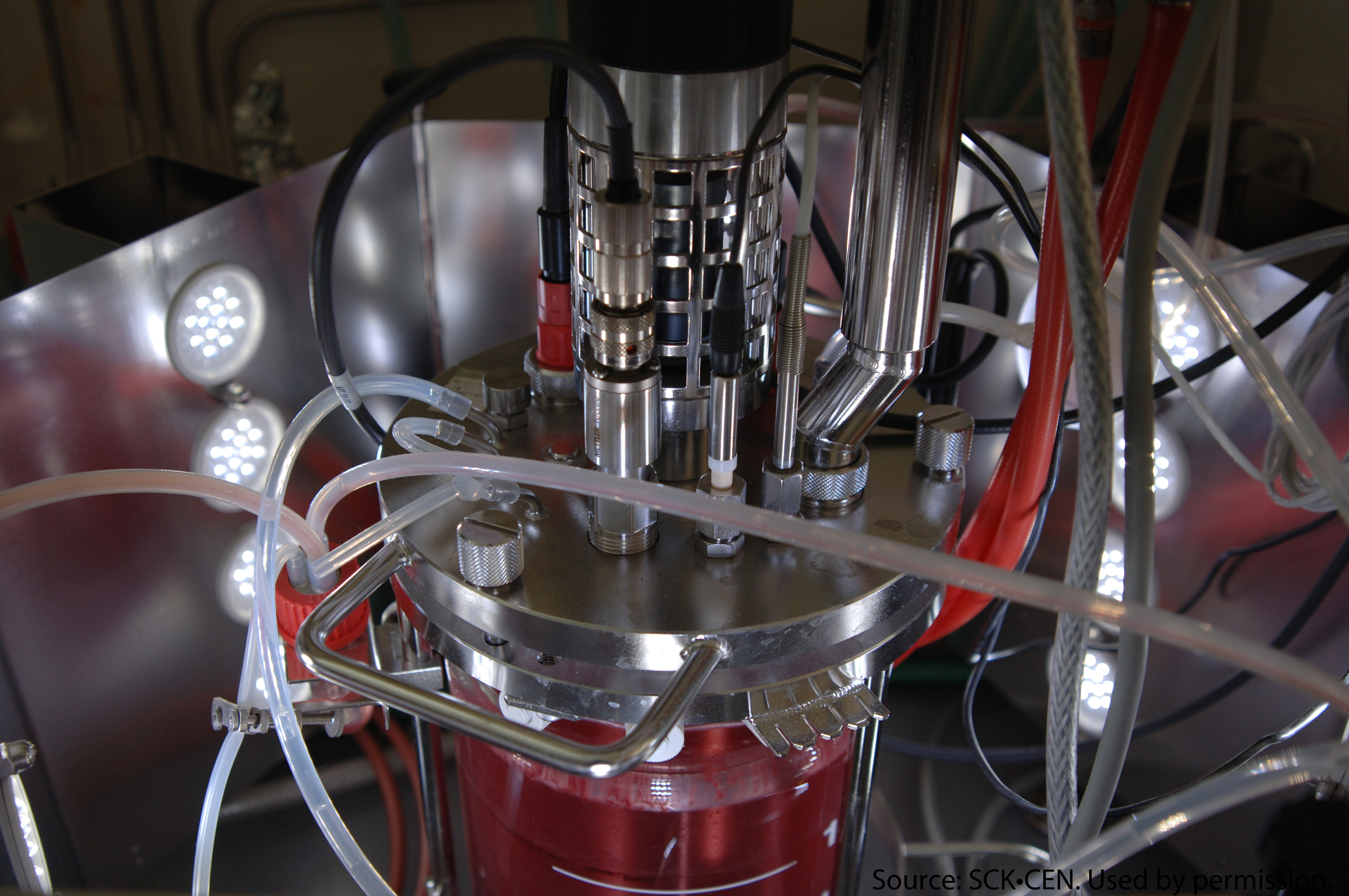Red bacteria as astronaut food

Like something out of Stanley Kubrick’s famed 2001: A Space Odyssey her name is Melissa. Melissa was the first of her kind. Melissa will be there when the first of us touches down on Mars. She will feed and nurture us as we begin our exploration towards the stars. MELiSSA — or Micro-Ecological Life Support System Alternative — is a bioregenerative life-support system designed by the European Space Agency. She uses microorganisms living in interconnected controllable bioreactors to recycle organic waste. Melissa is essentially an artificial ecosystem — one that turns waste into food to feed her crew.
When long space missions start to become commonplace, when we start colonies over the horizon, one of the obstacles will be how to be self-sustaining in space. Within a closed artificial ecosystem such as the one inside a space shuttle, each day and each person will need 3.6 kg of potable water and 26 kg of hygiene water. At this point in time we are able to recycle somewhere in the region of 97% of the water used. Melissa was conceived as a microorganism and higher plants based ecosystem for the development of the technology for a future regenerative life support system for long term manned space missions. The system uses the combined activity of different living organisms — microbial cultures in bioreactors, a plant compartment and a human crew to completely recycle gas, liquid and solid wastes.
Creating this “loop” that essentially cycles carbon and nitrogen is sophisticated. For example, absorbing carbon dioxide can be a problem in a closed system. On Earth, trees are the best for absorbing atmospheric carbon dioxide, being able to fix anywhere in the region of 1 to 4 tons of carbon per hectare per year. Fixing carbon on a scale such as this will prove essential for sustainability in space.
It turns out that the answer can be found in the soda lakes of the East African Rift valley. Within the fertile lakes the conditions are ideal for Arthrospira organisms. Species of Arthrospira are even better than trees! They are able to fix 6.3 tons of carbon and produce 16.8 tons of oxygen per hectare per year. It seems, in the future, astronauts will sustain their year-long missions by eating microorganisms. Bacteria offer an attractive ingredient for space food. Quick and easy to grow, exponentially and to large numbers, and can provide the basic nutrients. And it was in search for astronaut space food that another discovery was made.
Within a laboratory in Holland, Melissa sits — humming, clunking and whirring. Inside, churning through the culture mix is a bacteria simply referred to as “red bacteria.” Red bacteria was initially investigated as a possible source of food for the astronauts. But is has recently been found to have remarkable cholesterol lowering properties.
Recent tests have demonstrated a reduction in LDL cholesterol levels of up to 50%. The idea now is to scale up production and do more tests to fully investigate the limits of red bacteria’s cholesterol lowering powers. At the moment, as it stands, red bacteria seems to be more effective at lower concentrations than existing cholesterol drugs.
Sadly red bacteria will never make it into near-Earth orbit, let alone to Mars. Red will not be used by MELiSSA as a cooking ingredient for astronauts because an alga was found to be more suitable for the job.
 Follow
Follow
1 thought on “Red bacteria as astronaut food”
Comments are closed.